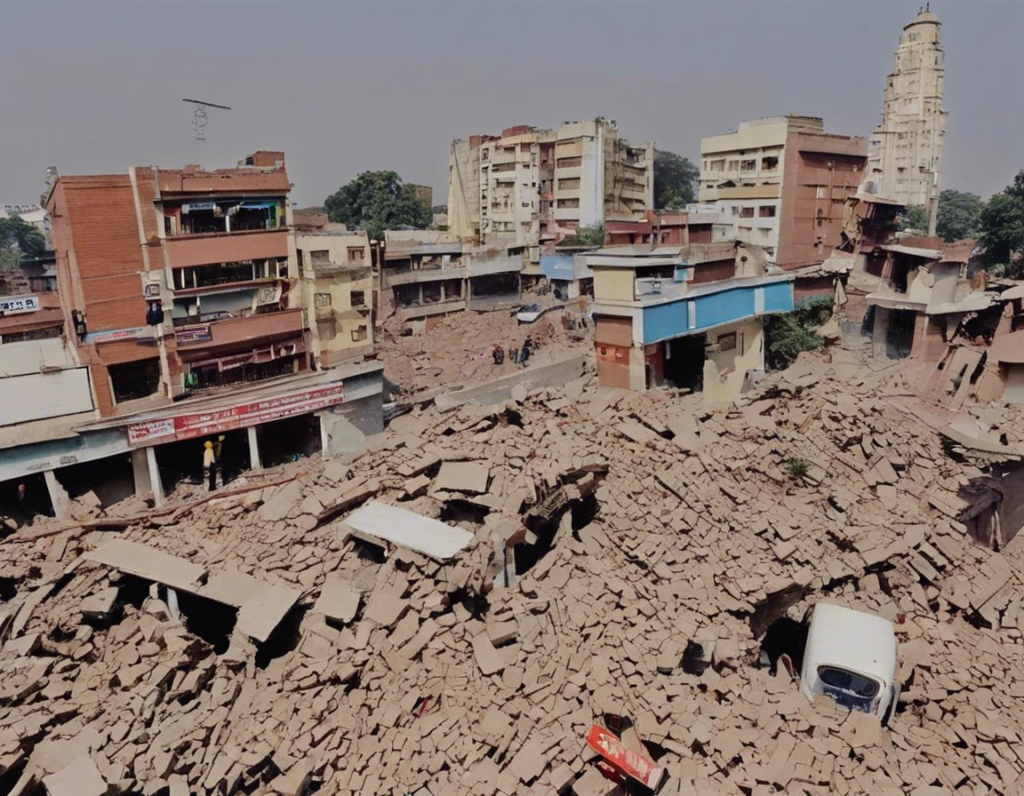
The bustling city of Patna, located in the eastern state of Bihar, India, was recently rocked by a devastating earthquake that left a trail of destruction in its wake. The tremors, measuring a magnitude of 7.2 on the Richter scale, struck with little warning, catching residents off guard and causing widespread panic and chaos. The earthquake’s epicenter was located just 20 miles outside the city, intensifying the impact and leading to significant loss of life and property.
The earthquake in Patna had far-reaching consequences, causing massive devastation across the city and its surrounding areas. Some of the most notable impacts include:
The earthquake resulted in the tragic loss of hundreds of lives, with many residents trapped under rubble and debris as buildings collapsed around them. Rescue operations were launched swiftly, but the scale of the disaster made it challenging to reach all those in need in time.
Homes, businesses, and public infrastructure bore the brunt of the earthquake’s force, with many structures suffering severe damage or complete destruction. Roads were rendered impassable, making it difficult for emergency services to reach affected areas and hindering relief efforts.
Thousands of residents were forced to flee their homes in the aftermath of the earthquake, seeking shelter in temporary camps set up by relief organizations. The displacement of such a large number of people added further strain to an already overwhelmed city infrastructure.
The earthquake dealt a severe blow to Patna’s economy, disrupting businesses, markets, and essential services. The cost of rebuilding and recovery is expected to be substantial, placing a significant financial burden on the city and its residents.
Beyond the physical damage, the earthquake also left a deep emotional impact on the residents of Patna. Many survivors are grappling with trauma, anxiety, and grief as they come to terms with the loss of loved ones and the upheaval of their lives.
In the wake of the earthquake, emergency response teams and humanitarian organizations sprang into action to provide much-needed assistance to the affected population. Some of the key relief efforts included:
Teams of trained professionals worked tirelessly to search for survivors trapped in the rubble and debris of collapsed buildings. Every effort was made to reach those in need and evacuate them to safety.
Temporary shelters were set up to accommodate displaced residents, providing them with a safe place to stay until more permanent solutions could be arranged. Food, water, and medical supplies were also distributed to those in need.
Mobile medical teams were deployed to provide emergency healthcare services to the injured. Field hospitals were established to treat trauma cases, perform surgeries, and ensure that medical needs were met in a timely manner.
Efforts were made to clear debris from the streets and begin the process of rebuilding damaged structures. Engineers and architects assessed the structural integrity of buildings to determine their safety and suitability for habitation.
As Patna begins the long journey of recovery and rebuilding, a comprehensive strategy is essential to ensure the city can bounce back from this disaster. Some critical aspects of the long-term recovery process include:
Investing in earthquake-resistant infrastructure is crucial to mitigate the impact of future seismic events. Retrofitting existing buildings and implementing stringent construction codes can help prevent loss of life and property in the future.
Building community resilience through training, education, and awareness programs can empower residents to respond effectively to emergencies and disasters. Engaging with local communities and involving them in disaster preparedness efforts is key to enhancing overall resilience.
Supporting small businesses, revitalizing markets, and creating employment opportunities are vital components of Patna’s economic recovery. Providing financial assistance, low-interest loans, and grants can stimulate economic growth and help businesses rebuild and thrive.
Addressing the psychological toll of the earthquake is paramount to helping residents cope with trauma and emotional distress. Counseling services, support groups, and mental health resources should be made available to those in need to promote healing and resilience.
The earthquake that struck Patna has left an indelible mark on the city and its residents, but it has also highlighted the strength and resilience of the community in the face of adversity. By coming together, supporting one another, and implementing comprehensive recovery efforts, Patna can rebuild stronger and more resilient than before. As the city mourns its losses and looks towards a brighter future, the spirit of solidarity and determination will serve as a beacon of hope in the challenging days ahead.
The earthquake in Patna came as a surprise as the region is not known for frequent seismic activity. However, as India lies in a seismically active zone, the risk of earthquakes is always present.
Residents can take proactive steps such as securing heavy furniture, creating emergency kits, and identifying safe spots in their homes to shelter during earthquakes.
Donating to reputable organizations, spreading awareness on social media, and volunteering for virtual support initiatives are ways individuals can contribute to relief efforts remotely.
Government agencies are responsible for coordinating rescue operations, providing emergency services, and implementing long-term recovery plans to restore normalcy in Patna post-earthquake.
Businesses can access financial assistance programs, collaborate with governmental agencies, and explore innovative recovery strategies to rebuild and revitalize their operations in the aftermath of the earthquake.